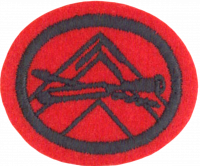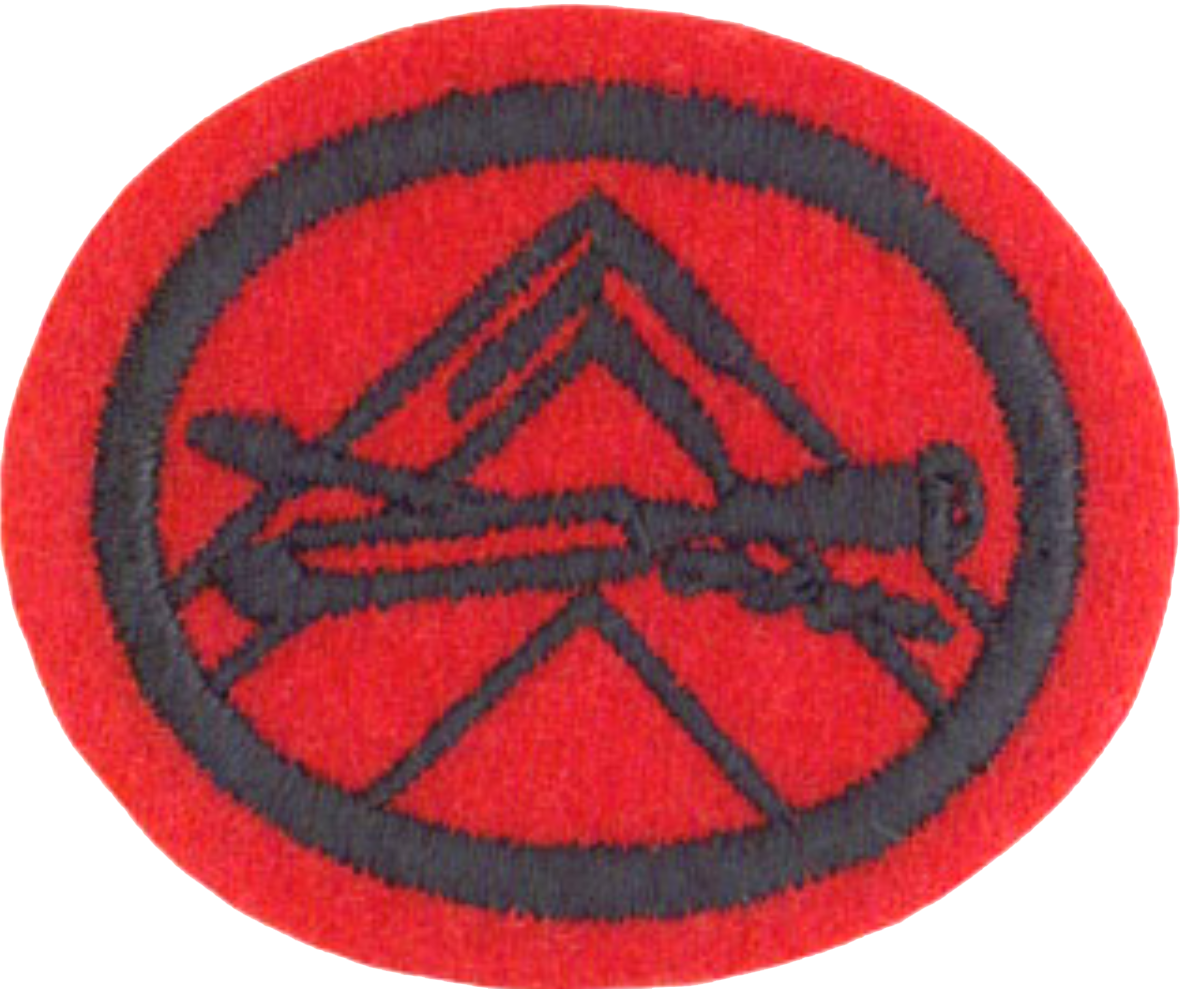Difference between revisions of "AY Honors/Woodworking/Answer Key/es"
From Pathfinder Wiki
< AY Honors | WoodworkingAY Honors/Woodworking/Answer Key/es
(Created page with "</noinclude> <!-- 6. Saber por lo menos dos maneras de terminar los bordes de madera contrachapada. -->") |
|||
| (5 intermediate revisions by 2 users not shown) | |||
| Line 241: | Line 241: | ||
{{CloseReq}} <!-- 6 --> | {{CloseReq}} <!-- 6 --> | ||
{{ansreq|page={{#titleparts:{{PAGENAME}}|2|1}}|num=7}} | {{ansreq|page={{#titleparts:{{PAGENAME}}|2|1}}|num=7}} | ||
| − | <noinclude> | + | <noinclude></noinclude> |
| − | </noinclude> | + | <!-- 7. Demostrar la técnica correcta de empaste y sujeción de madera. --> |
| − | <!-- 7. | ||
| − | |||
| − | |||
<noinclude></noinclude> | <noinclude></noinclude> | ||
{{CloseReq}} <!-- 7 --> | {{CloseReq}} <!-- 7 --> | ||
{{ansreq|page={{#titleparts:{{PAGENAME}}|2|1}}|num=8}} | {{ansreq|page={{#titleparts:{{PAGENAME}}|2|1}}|num=8}} | ||
| − | <noinclude> | + | <noinclude></noinclude> |
| − | </noinclude> | + | <!-- 8. Elegir un plan para un artículo de mobiliario doméstico completo tal como una pequeña mesa, taburete, escritorio o biblioteca. Hacer una lista de los materiales necesarios para el proyecto. --> |
| − | <!-- 8. | ||
| − | |||
| − | |||
{{clear}} | {{clear}} | ||
| Line 309: | Line 303: | ||
{{CloseReq}} <!-- 8 --> | {{CloseReq}} <!-- 8 --> | ||
{{ansreq|page={{#titleparts:{{PAGENAME}}|2|1}}|num=9}} | {{ansreq|page={{#titleparts:{{PAGENAME}}|2|1}}|num=9}} | ||
| − | <noinclude> | + | <noinclude></noinclude> |
| − | </noinclude> | + | <!-- 9. Conocer y usar los pasos adecuados para el acabado de un proyecto con la madera, ya sea natural o teñida. --> |
| − | <!-- 9. | ||
| − | |||
| − | |||
{{clear}} | {{clear}} | ||
| Line 328: | Line 319: | ||
{{CloseReq}} <!-- 9 --> | {{CloseReq}} <!-- 9 --> | ||
{{ansreq|page={{#titleparts:{{PAGENAME}}|2|1}}|num=10}} | {{ansreq|page={{#titleparts:{{PAGENAME}}|2|1}}|num=10}} | ||
| − | <noinclude> | + | <noinclude></noinclude> |
| − | </noinclude> | + | <!-- 10. Hacer dos de los siguientes: --> |
| − | <!-- 10. | + | <noinclude></noinclude> |
| − | <noinclude | ||
| − | |||
{{ansreq|page={{#titleparts:{{PAGENAME}}|2|1}}|num=10a}} | {{ansreq|page={{#titleparts:{{PAGENAME}}|2|1}}|num=10a}} | ||
<noinclude></noinclude> | <noinclude></noinclude> | ||
| Line 359: | Line 348: | ||
{{clear}} | {{clear}} | ||
| − | {{clear}} | + | {{clear}} |
<noinclude></noinclude> | <noinclude></noinclude> | ||
| Line 369: | Line 358: | ||
{{ansreq|page={{#titleparts:{{PAGENAME}}|2|1}}|num=10e}} | {{ansreq|page={{#titleparts:{{PAGENAME}}|2|1}}|num=10e}} | ||
<noinclude></noinclude> | <noinclude></noinclude> | ||
| − | |||
| − | |||
<noinclude></noinclude> | <noinclude></noinclude> | ||
{{CloseReq}} <!-- 10e --> | {{CloseReq}} <!-- 10e --> | ||
{{CloseReq}} <!-- 10 --> | {{CloseReq}} <!-- 10 --> | ||
{{CloseHonorPage}} | {{CloseHonorPage}} | ||
Latest revision as of 21:23, 14 July 2022
Trabajos en madera
Nivel de destreza
2
Año
1934
Version
21.05.2024
Autoridad de aprobación
Asociación General
1
Decir cómo los siguientes procesos están relacionados con la madera y la manera en que cada proceso se realiza:
1a
Sembrar árboles
1b
La recolección de árboles
1c
Fresado
1d
Curado
1e
La clasificación
1f
El calibrado
2
Recopilar y etiquetar cinco diferentes clases de madera utilizados en los trabajos en madera. Decir las ventajas y desventajas de cada uno.
3
Hacer una lista de las herramientas básicas de mano y eléctricas necesarias para hacer trabajos en madera. Saber cómo utilizar con seguridad cada herramienta y la forma de mantenerla en buen estado de funcionamiento, incluyendo el afilado, si procede.
4
Explicar las siguientes ensambladuras:
4a
Superpuesta
4b
Encastrada
4c
Cola de milano
4d
Clavija
4e
Media madera
4f
Inglete con punta plana
4g
Muesca y espiga
4h
Por ranuras
5
Conocer las características y cómo trabajar con lo siguiente:
5a
Cartón piedra
5b
Madera comprimida
5c
Madera contrachapada
6
Saber por lo menos dos maneras de terminar los bordes de madera contrachapada.
7
Demostrar la técnica correcta de empaste y sujeción de madera.
8
Elegir un plan para un artículo de mobiliario doméstico completo tal como una pequeña mesa, taburete, escritorio o biblioteca. Hacer una lista de los materiales necesarios para el proyecto.
9
Conocer y usar los pasos adecuados para el acabado de un proyecto con la madera, ya sea natural o teñida.
10
Hacer dos de los siguientes:
10a
Hacer un proyecto con una puerta o tapa con bisagras de inserción.
10b
Hacer una maqueta de una casa o un edificio con un corte longitudinal mostrando el interior en detalle.
10c
Ayudar en la formulación y/o reparación de juguetes de madera para los niños necesitados.
10d
Hacer un proyecto usando ensambladuras del tipo clavija, inglete de punta plana o muesca y espiga.
10e
Hacer un proyecto con cortes curvos, biselados o bordes redondeados.


